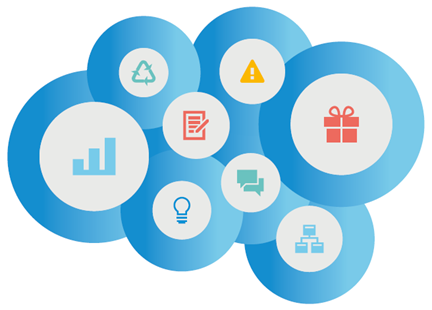
Seven must-have features to look out for in SRM technology when managing supplier relationships
SRM research has revealed that technology investment has been a perennial problem in managing supplier relationships. According to our data from 303 global companies, 86% of Tier 1 supplier relationships in the Fortune 500 are managed using Microsoft Excel spreadsheets.
Now, Excel is a great desktop tool. But it is not enterprise software. If you are managing relationships that account for billions of dollars in spending, and depending on contributions from hundreds of people, using Excel is not sustainable. Sharing Excel documents risks creating multiple copies of data, which can change over time. It can also be a problem for security. But what do businesses need in the software they will use to manage the supplier relationships that are so vital to business efficiency and value? Here’s our guide to the top seven features to look out for in SRM technology.
-
Suppliers must be able to log in and collaborate with you. Unlike most CRM or current procurement technologies, SRM software needs to interface with organisations outside your company. Suppliers need to work on the same data as internal teams and update information as necessary. Right now, most businesses store the vital information they need in different places and share it via email. That is a sure-fire way to create inconsistencies.
-
People managing relationships should find the technology easy to use. You can’t purchase technology that does SRM for you; businesses need technology that can handle tactical processes to help their people to be more strategic. An SRM leader should be using the system every day, in the same way as account managers on the client-facing side of the business use CRM every day.
-
SRM software should connect easily with existing enterprise tools and other systems. In the world of technology, best in class is always changing and you need a tool that can centralise important supplier data into one picture. For example, risk monitoring technology is going to develop in the next few years to get smarter at spotting trends, such as changes in legislation that affect your business. You need to be able to take advantage of these developments without changing the SRM application.
-
It must cover contract, risk and performance management at the bare minimum. Extras include innovation, corporate social responsibility and prospect suppliers.
-
Supplier relationship managers need a system that can roll up information by category, business unit and region. To make enterprise changes, they need to be able to look at issues across the organisation and make decisions accordingly. If there are constantly late deliveries at a location, maybe the issue isn’t the suppliers, but within those business operations. Spotting trends like these can help identify possible cost reductions or ways to improve the health of multiple relationships.
-
The internal audience must include business stakeholders, not just procurement. The more people using SRM technology to provide updates on the relationship, the better your SRM programme. Getting people to learn to use the system, and perhaps change the way they work, can be the biggest challenge in introducing any new technology. There will always be rogue colleagues who will refuse to use the system (in the same way as CRM), but if you can show that having centralised information helps your people get their jobs done, then it will be seen as a tool, not a burden.
-
The system is not an electronic drawer in which to keep the contract and forget about it. When it comes to SRM, the point is to monitor and report on key clauses in the contract and understand how the relationship influences them. You need a system that can track, monitor and raise issues around what is happening in your supplier contracts.
By Molly Louthan, Managing Director North America, State of Flux
If you would like to talk further about any of these areas, please don’t hesitate to contact us at enquiries@stateofflux.co.uk or contact Molly Louthan.